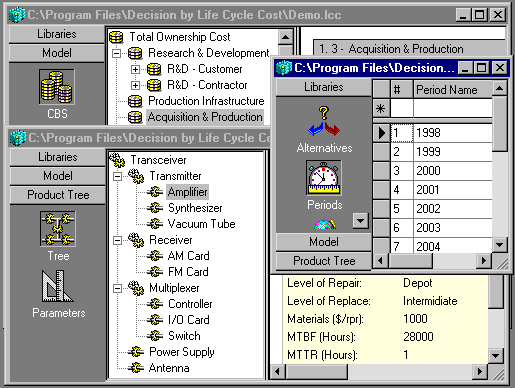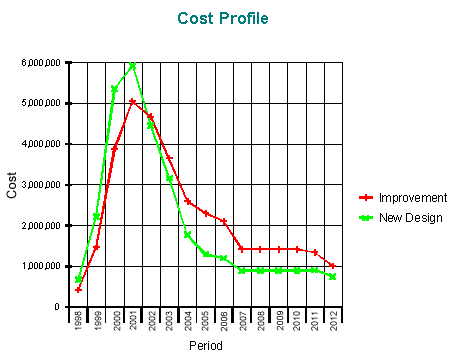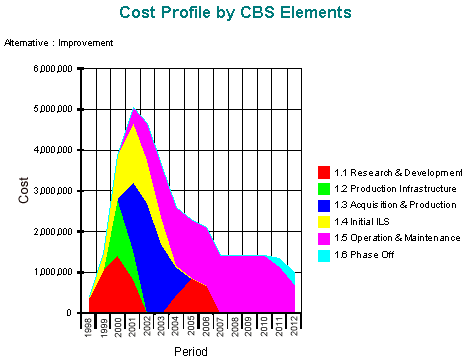Life Cycle Costing (LCC)
Why D-LCC?
Download the latest version of D-LCC
“The identification of appropriate software was crucial for our Life Cycle Costing (LCC) project. Several software vendors were researched. D-LCC was the only product, exclusively engineered to address LCC, but not specific to a sector, industry, or technology. D-LCC also answered our criteria: flexible enough to build a model ‘from scratch’, since ‘canned’ models all contained legacies of disappearing procurement paradigms, and powerful and user-friendly enough to allow model-building expeditiously.”
Robert N. McGrath, ERAU Life Cycle Costing
Life Cycle Cost (LCC) analysis and Total Cost of Ownership evaluation are the basis for decision making for the wide range of industries and equipment: from IT systems to submarines. LCC analyzes the total ownership costs of various design alternatives and system’s components over the projected life cycle of a system.D-LCC (Decision by Life Cycle Cost) makes the LCC analysis easy and comprehensive. D-LCC is a key tool for managers, decision-makers, engineers, ILS personnel, and other staff involved in system acquisition, proposal writing, management, development, production and through-life support.
Total Cost of Ownership
• Evaluation and comparison of alternative design approaches
• Comparison of alternative strategies
• Identification of cost effective improvements
• Project’s budget and economic viability assessment
• Long term financial planningLife Cycle Cost is defined by using a supplied or creating a new Cost Breakdown Structure (CBS) and allocating cost variables to each CBS primary element. D-LCC provides bottom-up cost estimating, supports detailed examination of the costs and parameters affecting LCC, and performs Net Present Cost analysis.

Life Cycle Costing (LCC) Analysis
• Product Tree Cost Calculation option allows for incorporating the Product Tree parameters in LCC model and calculating any required cost elements (like spare parts cost for each Level of Repair) across all Product Tree items.State-of-the-art features and options
Net Present Cost (NPC):
In financial and budgetary analysis, a necessary requirement is to identify the present value of future cash flows called Net Present Cost. The NPC analysis also provides comparison of options with different inflation and discount rates, and is enhanced through sensitivity analysis of these rates.
D-LCC supports detailed examination of dynamics of future cash flows over multiple time periods.
Sensitivity Analysis
Cost-Effectiveness evaluation
• Total and Detailed Costs
• Cost Profile
• Cost Profile by Elements
• Cost-Effectiveness
• Basic CBS Tree
• Optimal Repair Level Analysis
• Versatile User-definable Graphs and Tables
Convenience and Ease of Use
• Spreadsheet-like, easy to modify cost models for each CBS element
• Drag-and-drop and cut-paste for copying and editing of CBS and PBS elements
• Automatic calculation of total cost by alternative and period
• Powerful Expression Builder for the calculating algorithm creation
• Global change for all required elements — by changing a global variable, the user can immediately update many items throughout the project. D-LCC’s libraries make the LCC analysis procedure highly efficient:• Alternatives library — a list of all possible alternative decisions, policies, etc.
• Periods library — a list of future periods or life cycle phases
• Global Variables library — a set of Global Variables valid throughout the cost model and affecting many cost elements, e.g. escalation and discount rates.D-LCC is data compatible with other ALD packages for Reliability, Maintainability and Logistics Analysis such as RAM Commander.
Download the latest version of D-LCC



